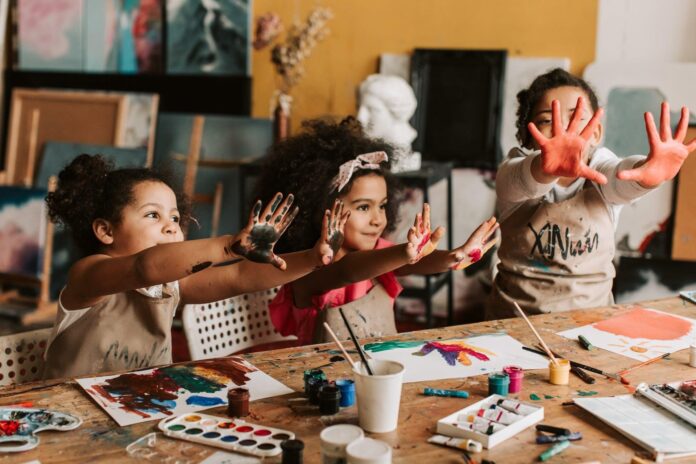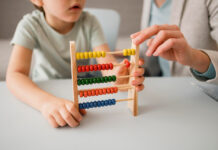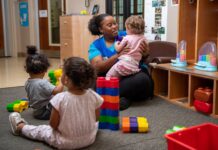One of the best ways to actively participate in your child’s growth and development is to establish a loving and stimulating learning environment at home. You, as parents, have a significant influence on how they learn in their early years and help to establish an eternal appreciation for learning and adventure.
From a young age, kids start to develop and exhibit their creativity. Early on, children often engage in creative play, storytelling, and imaginative play from toddlerhood through preschool and the first few years of primary school. Throughout these formative years, it is critical for parents and educators to support and promote creative expression in order to cultivate an enduring enthusiasm for creativity and inventive thought.
Use doable and entertaining ways to create a learning environment in the conveniences of your own home, so that your children not only succeed academically but also acquire critical life skills in a nurturing setting. Welcome the educational process as a family, and see how knowledge and curiosity coexist peacefully in your house.
Explore the art of developing their creativity by giving your family’s haven a blank canvas on which they can let their imaginations and inventiveness flow unrestrained. Here are 5 home-based activities to foster creativity in young children.
1 – Imaginative Play
Imaginative play is an excellent technique to fuel creativity and cognitive development in young children.
Mark a certain spot in your house for imaginative play. A corner with a rug, a few cushions, and a few props may be the backdrop for the scene. This helps set the stage for creative scenarios. Offer toys that encourage open-ended play. These types of toys allow for a wide range of imaginative scenarios.
Launch several themes for creative play. It may be a “jungle safari” day, an “outer space expedition” day, an “underwater kingdom”, or a “palace princess” day. This facilitates the making of imaginative scenarios. Provide toys that let kids play freely. These kinds of toys provide a multitude of creative possibilities.
Permit your kid to lead the play. Let them choose the roles they wish to play or direct the course of the story. They feel more empowered and given the chance to think for themselves. Engage your child in imaginative play on a regular basis. Assume various personas or roles, such as those of characters in their imaginary tales. Refrain from making too many directives in their play. Instead, to get them to think more, make recommendations or pose questions that are open-ended.
Honor your child’s originality and resourcefulness. Recognize their concepts, regardless of how fantastical they may be, and commend the work they dedicate to coming up with those unique scenarios.
2 – Visual Arts and Crafts Space
Children can freely and indefinitely explore their creativity when they have a dedicated art room at home. It turns into a space where these tiny individuals can use different art materials, colors, and forms to express themselves.
Construct a special art cabin for them in a well-lit, conveniently located part of your house. A range of art items, including crayons, markers, colored pencils, paints, paper, stickers, and other artistic materials, should be packed within it. An easel with a drawing board or a child-sized table could be perfect too. For simple cleanup, cover the surface with a substance that can be washed.
Examine different do-it-yourself projects and crafts that use recycled materials. This inspires creativity and instills the value of repurposing objects.
Give your kids the freedom to make their own works of art. Kids get the ability to organize and carry out their creative ideas. Give your kids the freedom to try out various mediums and develop their artistic talents. Urge children to use their imaginations without fears about creating a mess. A child’s self-esteem can be increased by accomplishing art projects and watching their products on display.
3 – Building Skills
Give your kids construction toys, like building blocks or LEGO sets, so they can design and knock together their own constructions. Start with construction sets that are open to interpretation, providing a great deal of flexibility. These sets frequently include simple parts or blocks that can be assembled in numerous manners to jazz up creativity and ingenuity.
Construction activity aids children form their spatial awareness by allowing them to interact with objects and position them in different spaces. Through the use of construction toys, children enhance their grasp of dimensions, forms, and the interrelationships between various components. As kids comprehend, stack, and connect the pieces, this game also improves fine motor skills and hand-eye coordination.
Children create original constructions, concepts, and scenarios using construction toys to bring their ideas to reality. They develop their ability to think cleverly and beyond the box as they experiment across different block or material combinations.
4 – Storytelling Time
Start with characters or themes that your youngster is interested in and is familiar with. This could be about their favorite cartoon characters, superheroes, animals, or hobbies. Their familiarity may perk up their sense of immersion in the narrative.
Asking your kids to create and narrate original stories is a incredible way to spur storytelling. Motivate your youngster to take an active role in the narrative process. Get their ideas for plot twists, characters that are used and settings. Your child should be encouraged to use their imagination widely. Invite them to consider what might happen next in a novel manner. This impels a collaborative and pleasurable storytelling experience while also broadening their creative capacity.
To vivify the experience, use images or other visual aids. This may consist of action figurines, stuffed animals, or even illustrations of the story’s characters or surroundings.
5 – Music and Dance
Play a range of genres and styles to make music a central element of your home. One of the most powerful ways to drive creativity and language development is through singing. Sing along to your favorite tunes, compose funny or creative lyrics with others, or even write original music. The most important thing is to have fun, not to worry about having a great voice. Kids will love it anyhow!
Give your kids access to musical instruments so they may play with sounds. Basic musical instruments such as xylophones, drums, and shakers, even though they could just be toys, are excellent for experiential learning and can boost their dexterity and rhythm. Use your imagination to create homemade instruments out of everyday objects. Rubber band guitars, rattles packed with rice, and empty boxes are a few examples.
Throw spontaneous dance parties in your house for the kiddos. Choose upbeat and energizing music, make some room, and have fun. Teach your youngster to dance freely and to express themselves. Participate and turn it into an enjoyable family activity.
_____________
UNLOCKING IMAGINATIONS
Providing a range of engaging and wide-ranging activities that spark imagination, discovery, and self-expression is essential to growing creativity in young children.
For a holistic approach to your child’s development, you may consult pediatricians to provide insights into physical and mental health, as well as general guidance on child development milestones. Child psychologists specialize in understanding and supporting children’s emotional and psychological well-being. Lawyers are not specifically trained in child development, but you can consult them for any matters of educational rights in the future.
Children are constantly experimenting with resources, exploring their environment, and using a variety of mediums to express themselves during their formative years. Their creative abilities can continue to grow as kids approach school age, which is between the ages of 6 and 12. This is because they will be exposed to a wider range of subjects, activities, and opportunities for critical thinking.
At the same time, realize that creativity is not confined to a specific age range; instead, it evolves over time. Nonetheless, it’s definitely a good idea to start them young, and open the first doors for them to realize their creativity! Unlock imaginations! It starts at home!















